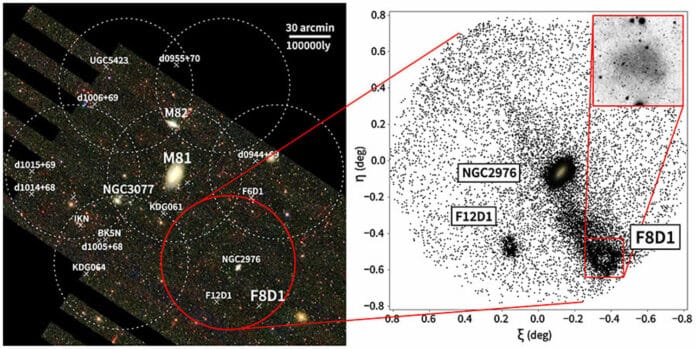In a recent study, Astronomers reported the discovery of a giant tidal tail of stars associated with F8D1, the closest known example of an ultra-diffuse galaxy (UDG). This galaxy is a member of the M81 group located 12 million light-years away on the boundary between the constellations Ursa Major and Camelopardalis.
Astronomers using the Subaru Telescope and the Canada-France-Hawaii Telescope discovered a giant diffuse tail of a star, stretching 200,000 light-years out away from a galaxy F8D1.
The presence of a tail means that the galaxy has recently interacted with another galaxy. This is crucial information for comprehending how so-called “ultra-diffuse” galaxies are created. It is also compelling evidence that the galaxy has been strongly shaped by events in the past billion years.
This is the first time a stellar stream of this kind has been found in a UDG. The research team hypothesizes that F8D1 was disturbed by a recent close encounter with the giant spiral M81, which dominates the group in which F8D1 is found.
Since F8D1 lies at the edge of the survey area, only one tidal arm can be seen, extending to the northeast. The team will now search to see if there is a counterpart stream to the southwest.
Journal Reference:
- Rokas Žemaitis, Annette M N Ferguson et al. A tale of a tail: a tidally disrupting ultra-diffuse galaxy in the M81 group. Monthly Notices of the Royal Astronomical Society. DOI: 10.1093/mnras/stac3133
